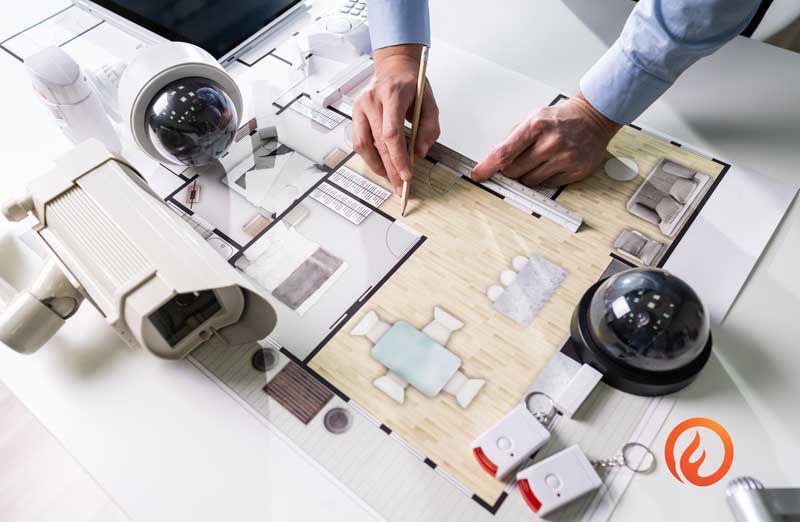Buildings that are classified as correctional occupancy are required to be protected by fire alarm systems that meet design specifications from the National Fire Protection Association (NFPA). Those tasked with designing fire alarm systems for correctional facilities need to know what’s required of systems designed to protect buildings that are classified as correctional occupancy.
What is Correctional Occupancy?
According to NFPA building occupancy classifications, a building is classified as a detention and correctional occupancy when it is a facility housing at least one person under restraint. Because most correctional occupancy buildings are detention facilities housing numerous inmates full-time, the NFPA 101 Life Safety Code requirements of correctional occupancy buildings are similar to those of educational occupancy buildings. Here are some of the key requirements of correctional occupancy fire alarm systems.
Tamper-Proofing Pull Stations
NFPA 101 requires fire alarms to be initiated manually via pull stations. However, just as a pull station may be used by a student attempting to cancel classes at school, a pull station may also be pulled by an inmate looking to create a chaotic environment at a correctional facility. For that reason, NFPA 101 allows detention and correctional facilities to tamper-proof fire alarm pull stations by locking them up, provided certain conditions are met. In some states, fire codes have more elaborate requirements for alarm initiation.
For example, California fire codes require every detention facility to be equipped with both automatic and manual fire alarm systems.
Configuring Smoke Detectors
In correctional occupancy buildings, occupants typically live in locked dormitories or cells. When a fire alarm goes off, there is a high likelihood of panic spreading quickly throughout the facility because inmates are restrained in their living quarters. NFPA 101 addresses this with Sections 22.3.4.3.1(2) and 23.3.4.3.1(2), which allow all detention and correctional occupancies to configure their smoke detectors to an alarm only setting; this is only for on-site, constantly supervised locations in situations where alarming the entire facility is impractical.
Monitoring Fire Alarms
NFPA 101 requires detention and correctional occupancies to have their fire alarms monitored full-time. The only exceptions are in locations where the system employs a positive alarm sequence, or onsite staff who can promptly notify the fire department to monitor the alarm system. In those cases, smoke detectors are also not required to automatically notify the fire department.
Call Cadgen for More Support
By knowing the requirements of fire alarm systems that protect correctional occupancy buildings, fire alarm designers can create more effective products to protect detention facilities. If you are in need of a fire alarm design program for correctional use occupancy, consider FireCAD™, a fire alarm design program from Cadgen. We offer both a lifetime license and flexible subscription options. Please contact our sales department at (855) 206-1480 Ext. 1 to learn more; we will be glad to assist you.
- FireCAD x Inspect Point Integration: Closing the Gap Between Design and Inspection - November 20, 2025
- Design with Confidence: How FireCAD Simplifies NFPA Compliance for Fire Alarm Engineers - October 6, 2025
- Smarter Fire Alarm Design: How Engineers Can Streamline Workflows with FireCAD - October 6, 2025



